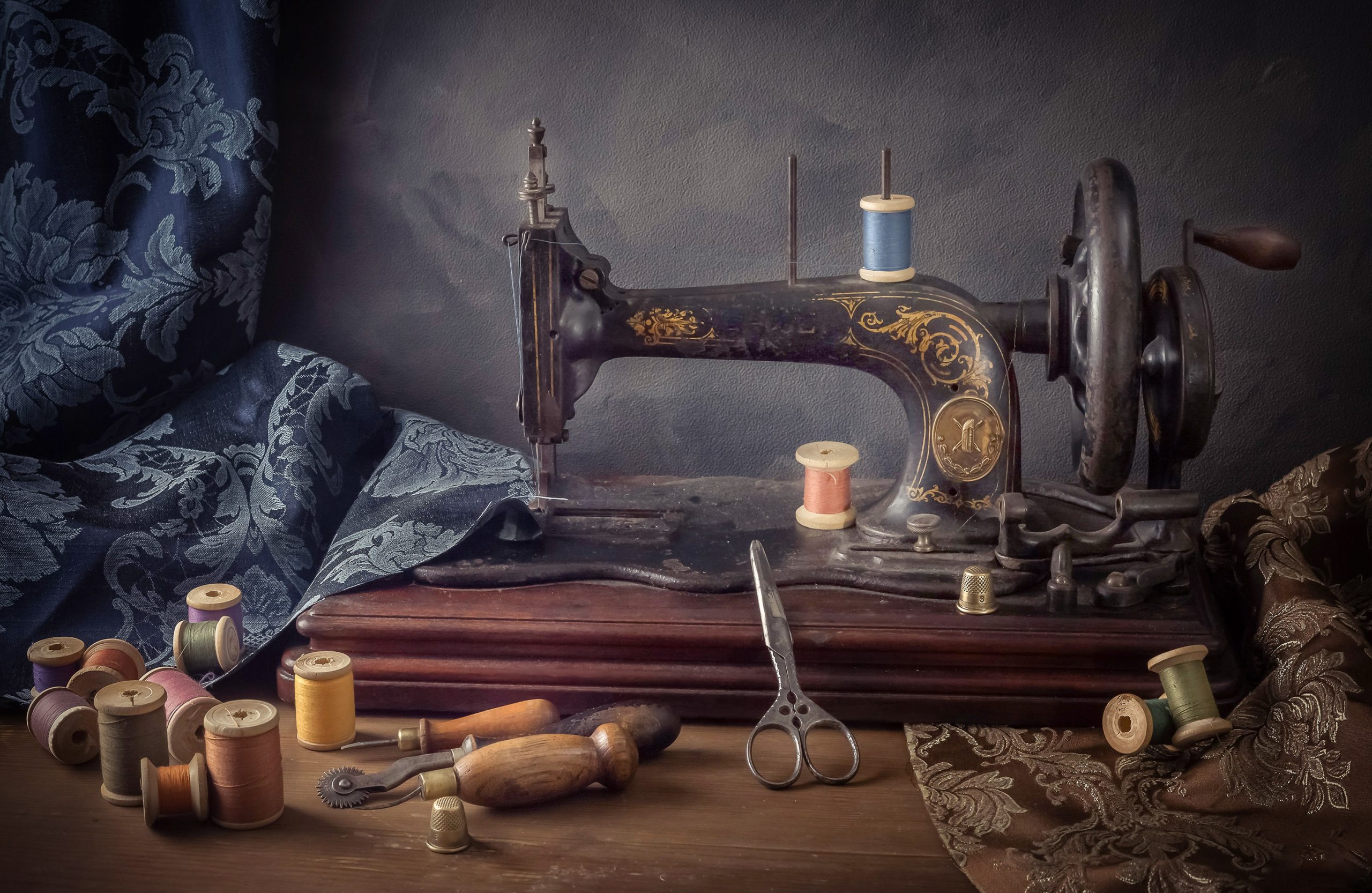
The history of sewing machines is a bit complicated, even controversial, and riddled by a number of attempts, failures, and patents issued—and not issued—to several pioneering inventors who contributed various elements which led to the modern-day sewing machine. Sewing machine history can be traced back to the 18th century, when the Industrial Revolution prompted a need for manufacturers to produce more sewing projects through less manual labor.
The Beginning of the Sewing Machine
In 1790, Thomas Saint, an Englishman, put together a very detailed design for a sewing machine featuring a hand crank and was issued a patent. Nearly a century later, in 1874, William Newton Wilson found Saint’s patent drawings and built a model based on his design.
During the interim, however, they were many attempts—and fails—at designing a sewing machine. This made Saint’s invention superfluous by the time a sewing machine was created by Wilson. Australian tailor Josef Madersperger, for instance, who acquired a patent in 1814, made attempts at creating a few different sewing machine designs, all of which were unsuccessful. It was actually a couple of Americans, John Knowles and John Adams Doge, who invented America’s first sewing machine. That machine, however, would break after sewing only a few pieces of fabric.
Putting Tailors out of Work

In 1830, someone finally created a sewing machine that was successful. French tailor Barthelemy Thimonnier designed a functioning sewing machine that created a chain-stitch using one thread and a hooked needle. Unfortunately, his machine-based clothing factory was burned down by other French tailors who feared his sewing machine would put them out of business! Walter Hunt, an American, invented a successful machine in 1834 that could sew straight seams. He anticipated a similar outcome, however (that his invention would lead to unemployment), and lost interest in getting his design sewing machine design patented.
Here’s where sewing machine history gets messy. In 1844, an English inventor, John Fisher, designed a machine that addressed problems with past models. Because of a mishap at the patent office, however, he never received the patent for the invention.
Around the same time, American inventor Elias Howe designed a machine resembling Fisher’s, with a process using a thread from two different sources to create a lockstitch. While he was in England trying to market his design, however, another American, Isaac Merritt Singer, designed a sewing machine that also utilized the lockstitch mechanism, as well as an up-and-down needle and foot pedal. Singer was issued a patent in 1851 and began mass production, initiating the reign of the iconic Singer sewing machine. His sewing invention, however, did appear to borrow elements from those designed by Thimonnier, Hunt, and Howe, and the latter took notice.
A Complicated Court Battle

In 1854, Howe sued Singer for patent infringement. Singer tried to bring up the point that Howe’s invention stole elements from Hunt, but since that inventor never received a patent, his intellectual property was technically considered free for anyone to use. Fisher might have also had a say in the matter, considering Singer and Howe’s machines both nearly replicated Fishers— if the patent office had ever fixed the misfiling. In the end, Howe won his case against Singer and was awarded a share in the I.M. Singer & Co. profits, as well as a portion of patent royalties.
Modern Day Sewing Machines
As is the case with many modern inventions and the drama involved with their creation, design, and patent process, sewing machine history does leave us wondering, “who is the real inventor?” Perhaps most accurately, several past inventors are to thank for their persistence and ideas that took the art of hand-stitching and made it more efficient, affordable and accessible. Today, many people capitalize on this invention by taking sewing classes, joining clubs, designing their own clothes, and participating in the culture of sewing in Tucson and beyond.
For any questions about your sewing machine or where to find sewing classes in Tucson, be sure to stop by one of our locations, visit our website, or give us a call here at Cathey’s Sewing & Vacuum.






